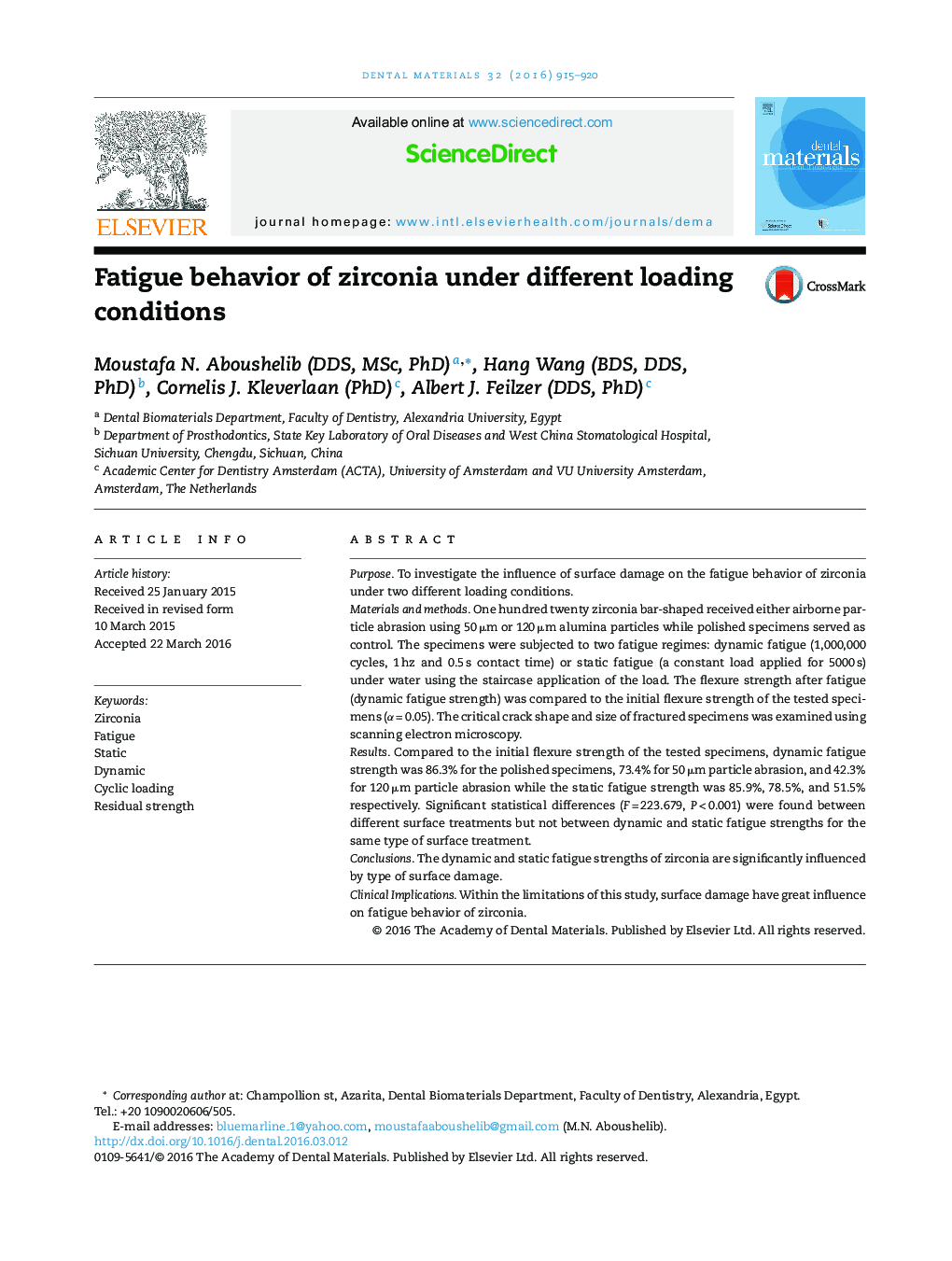| Article ID | Journal | Published Year | Pages | File Type |
|---|---|---|---|---|
| 1420407 | Dental Materials | 2016 | 6 Pages |
PurposeTo investigate the influence of surface damage on the fatigue behavior of zirconia under two different loading conditions.Materials and methodsOne hundred twenty zirconia bar-shaped received either airborne particle abrasion using 50 μm or 120 μm alumina particles while polished specimens served as control. The specimens were subjected to two fatigue regimes: dynamic fatigue (1,000,000 cycles, 1 hz and 0.5 s contact time) or static fatigue (a constant load applied for 5000 s) under water using the staircase application of the load. The flexure strength after fatigue (dynamic fatigue strength) was compared to the initial flexure strength of the tested specimens (α = 0.05). The critical crack shape and size of fractured specimens was examined using scanning electron microscopy.ResultsCompared to the initial flexure strength of the tested specimens, dynamic fatigue strength was 86.3% for the polished specimens, 73.4% for 50 μm particle abrasion, and 42.3% for 120 μm particle abrasion while the static fatigue strength was 85.9%, 78.5%, and 51.5% respectively. Significant statistical differences (F = 223.679, P < 0.001) were found between different surface treatments but not between dynamic and static fatigue strengths for the same type of surface treatment.ConclusionsThe dynamic and static fatigue strengths of zirconia are significantly influenced by type of surface damage.Clinical ImplicationsWithin the limitations of this study, surface damage have great influence on fatigue behavior of zirconia.
